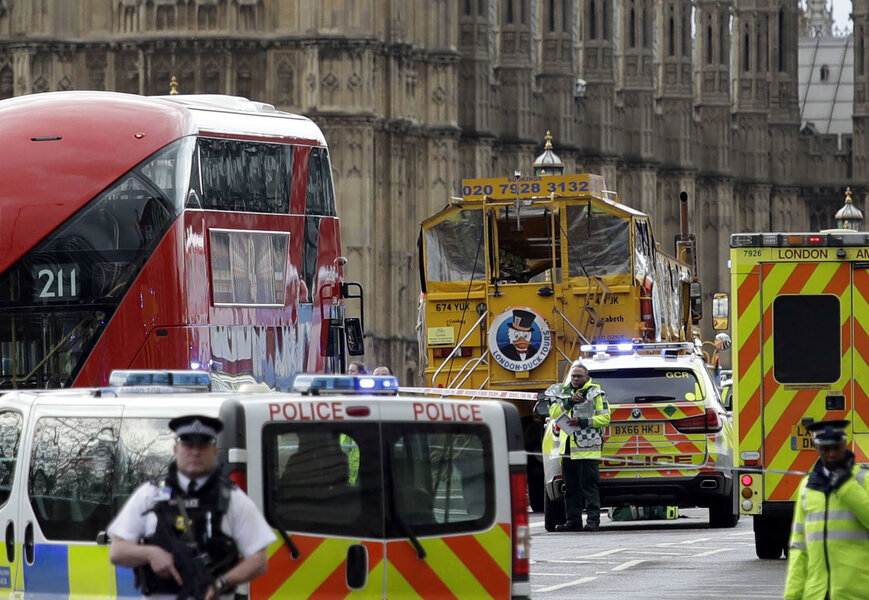What is known so far about terrorist attack outside London's Parliament
Loading...
At least 20 people were injured and at least four people killed in what officials are saying was a terrorist attack that took place near the British Parliament building in London Wednesday afternoon.
Witnesses inside the building reported hearing gunshots around 2:30 p.m local time. Others reported that a vehicle was seen on the nearby Westminster Bridge running over several pedestrians. It is unclear how many casualties there are, though one doctor on the scene reported that about a dozen people were hurt on the bridge to varying degrees of severity. Two civilians have been confirmed dead. In addition to victims on the bridge, the attacker fatally stabbed one police officer on duty outside Parliament before the assailant was shot and killed by police. A woman was also reportedly taken out of the river near the Westminster bridge, injured but alive.
"Officers – including firearms officers – remain on the scene and we are treating this as a terrorist incident until we know otherwise," London's Metropolitan Police said in a statement.
On Thursday afternoon, Scotland Yard officially declared the incident a terrorist attack, and a spokesman told reporters that "a full counterterrorism investigation is already underway."
Initial reports say the police believe there was just one attacker.
Emergency medical services and police are responding to the scene at the bridge and in Parliament, and residents are being urged to stay indoors and only call 999 for emergency services if absolutely necessary.
Prime Minister Theresa May was at Parliament when the incident occurred, but a spokesman confirmed that she was moved to a safe, undisclosed location.
Quentin Letts, a journalist for the Daily Mail newspaper, told MSNBC that he was in his office when he heard the "sound of something happening on the bridge."
"I saw a fairly thick set man wearing black clothes running through the open gates, the security gates where people drive their cars. He seemed to have something in his hand, maybe a knife, maybe a stick," Mr. Letts said. "He started beating a policeman who had fallen over on the ground. The policeman managed to shake him off and the attacker then ran towards the entrance of the House of Commons, which is used by our members of Parliament and he got about 15 yards before the authorities responded."
Letts said the police response was "incredibly fast," adding that police shot the man two or three times as he ran toward the Parliament building.
The House of Commons was in session at the time, but was immediately suspended as the attack unfolded, putting the building in lockdown.
"When I got inside I was wondering what the hell was going on and I saw dozens of panicked people running down the street," said Dennis Burns, who was entering Parliament for a meeting at the time of the initial police response. "The first stream was around 30 people and the second stream was 70 people."
"It looked like they were running for their lives," he added.
In the United States, President Trump said he had been briefed on the incident, but did not give any details.
"We condemn these horrific acts of violence, and whether they were carried out by troubled individuals or by terrorists, the victims know no difference," US Secretary of State Rex Tillerson said.
Britain had been on the second-highest alert level at the time of the attack, exactly one year after terrorist attacks in Brussels, Belgium. The city was also on alert for the upcoming funeral of Martin McGuinness, former IRA commander, which will take place on Thursday.
A planned evacuation of Parliament has been halted after a report of a "suspect package" was found attached to a vehicle parked outside the building, which is currently being dealt with by police.
This article contains material from the Associated Press and Reuters.








